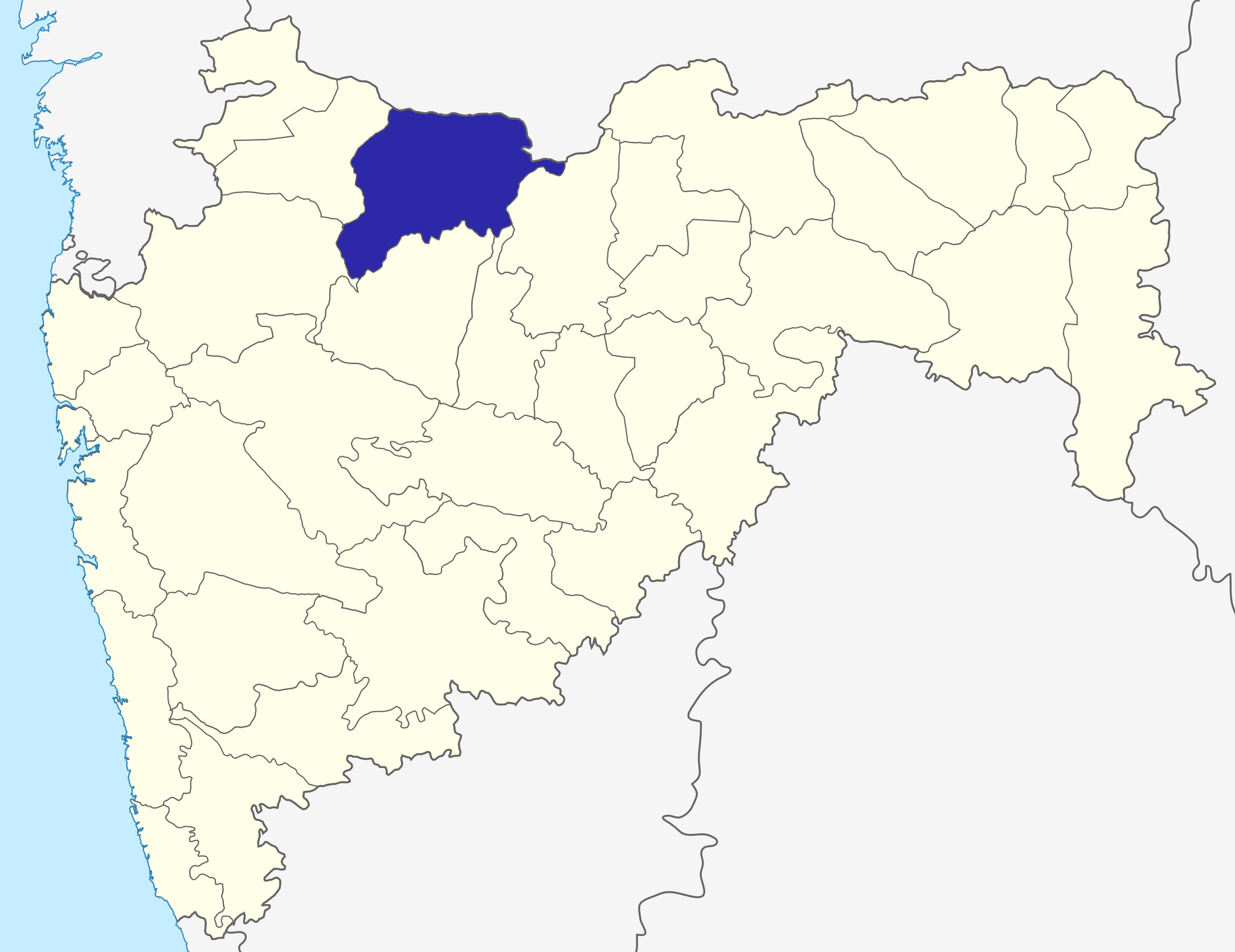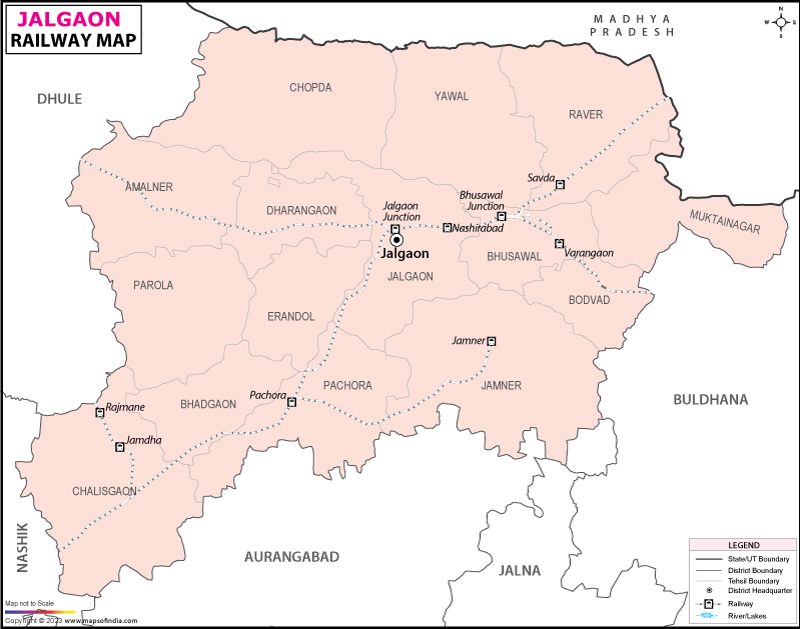
D-Glucitol, 1,5-anhydro-1-C-[4-chloro-3-[(4-ethylphenyl)methyl]phenyl]-, (1S)-
(2S,3R,4R,5S,6R)-2-(3-(4-ethylbenzyl)-4-chlorophenyl)-6-(hydroxymethyl)-tetrahydro-2H-pyran-3,4,5-triol
cas 879545-38-7
http://www.google.com/patents/WO2006034489A2?cl=en

EXAMPLE 1
A. 5-Bromo-2-chloro-4'-ethylbenzophenone
[00119] To a 2L round bottom flask containing a magnetic stirred suspension of commercial 5-bromo-2-chlorobenzoic acid (41Og, 1.74 mol) in 700 mL OfCH2Cl2 'was added oxalyl chloride (235g, 1.85 mol) followed by 1.5 mL of DMF. To trap the resultant HCl, the flask was fitted with tubing so that the gas was discharged above the surface of a stirred aq KOH solution. When the vigorous evolution of gas ceased after two hours, the homogeneous reaction was stirred overnight prior to removal of the volatiles under vacuum using a rotary evaporator.
The resultant oil solidified during subsequent evacuation. [00120] After dissolving the crude 5-bromo-2-chlorobenzoyl chloride in 530 ml of ethylbenzene, the yellow solution was cooled to -30C prior to adding AlCl3 (257g, 1.93 mol) in ~30g portions over 60 min to insure that the temperature did not exceed 1O0C. The copious amounts of HCl gas which began to evolve after 60% of the AlCl3 had been added were trapped by passing the gas over a stirred cone.
NaOH solution. If the reaction were more concentrated, a magnetic stirrer could not have maintained stirring upon completion of the addition of AlCl3. After stirring for 1 hr as the bath warmed to ~15°C, the bath was removed. After 4 hr at 2O0C, the thick syrup was poured over ice (1.5 kg). Subsequently, once the stirred suspension had cooled, H2O (IL ) was added prior to being extracted 4x with EtOAc. The combined organic extracts were washed 2x with IN HCl, 3x with IM KOH, and 2x with brine prior to drying over Na2SO4. The volatiles were removed using first a rotary evaporator and then by heating at ~60°C at 1 Torr. IH NMR analysis of the resultant dark oil revealed the residue to be a 1 : 14 mixture of ortho/para isomers. Dissolution in hexane and followed by filtration through a silica gel pad removed most of the color. Concentration of the eluent yielded 56Og (99%) of a 14:1 mixture of 5-bromo-2- chloro-4 ' -ethylbenzophenone / 5 -bromo-2-chloro-2 ' -ethylbenzophenone. [00121] HPLC retention time: 4.7 min, YMC S5 C-18 4.6x50mm column, 2.5 mL/min, detection at 22OnM; 4 min gradient 0-100% B hold 2 min at 100% B. Solvent A: 10% MeOH/H2O + 0.2 % H3PO4. Solvent B: 90% MeOH/H2O + 0.2 % H3PO4.
5-Bromo-2-chIoro-4'-ethyIbenzophenone
[00122] 1H NMR (400 MHz, CDCl3) δ 7.73 (d, 2H, JAB = 8.2 Hz), 7.54 (dd, IH, J = 2.2 Hz, J = 8.8 Hz), 7.32 (d, IH, J = 8.8 Hz), 7.295 (d, 2H, JAB = 8.2 Hz), 2.72 (q, 2H, JK7.7 Hz), 1.27 (t, 3H, J=7.7 Hz).
[00123] 13C NMR (100 MHz, CDCl3) δ 193.13. 151.33, 140.49, 133.8, 133.52, 131.6, 131.44, 130.34, 130.16, 128.28, 120.44, 29.04, 15.02. 5-Bromo-2-chloro-2'-ethylbenzophenone (distinctive signals) [00124] 1K NMR (400 MHz, CDCl3) δ 2.64 (q, 2H, J=7.7 Hz), 1.23 (t, 3H, J=7.7 Hz). [00125] 13C NMR (100 MHz, CDCl3) δ 28.9, 15.5.

B. 5-Bromo-2-chloro-4'-ethyldiphenylmethane
[00126] To a stirred solution OfEt3SiH (400 g, 3.45 mol and 5-bromo-2-chloro-4'- ethylbenzophenone (534g, 1.65 mol) containing -7% of the isomeric ketone in 300 mL of TFA at 300C was added CF3SO3H (1.5 g, 0.01 mol). Within minutes the temperature increased causing the solution to reflux violently. Caution this moderate exotherm requires cooling with an external ice bath. After 1 hr, HPLC revealed the reaction to be 90% complete. After addition of an additional Et3SiH (2Og ) and heating overnight at 700C, the reaction was > 95% complete by HPLC analysis. Upon cooling, the volatiles were removed by bulb to bulb distillation at reduced pressure. The resultant ~ IL of light gray oil was poured into IL OfH2O. The mixture was extracted 3x with hexane; the combined organic layers were washed 3x with H2O, 2x with aq Na2CO3 and 2x with brine before drying over Na2SO4. After concentration using a rotary evaporator, ~ 1 L of clear light amber oil remained.
This material was further concentrated; the (Et3Si)2O (450 mL) was removed by distillation at 0.6 Torr. Once the temperature at the distillation head reached 75°C, the pot was allowed to cool. IH NMR analysis of the pot revealed it to contain an ~ 8: 1 mixture of diarylmethane to (Et3Si)2O. Crystallization of this mixture was achieved by pouring the product into vigorously stirred 100C 85% EtOHTH2O (1.2L), After stirring for several hours, the crystals were collected by filtration, washed with cold 1:1 EtOHZH2O and dried under vacuum. The 5~bromo~2-chloro-4'-ethyldiphenyl- methane (500 g), obtained as a low melting solid containing ~1% (Et3Si)2O, was used without further purification.
[00127] HPLC retention time: 5.3 min, YMC S5 C-18 4.6x50mm column, 2.5 mL/min, detection at 22OnM; 4 min gradient 0-100% B hold 2 min at 100% B. Solvent A: 10% MeOH/H2O + 0.2 % H3PO4. Solvent B: 90% MeOH/H2O + 0.2 % H3PO4.
[00128] 1H NMR (125 MHz, CDCl3) δ 7.27-7.23 (m, 3H), 7.14 (d, 2H, JAB = 7.7 Hz), 7.09 (d, 2H, JAB = 7.7 Hz), 2.63 (q, 2H, J=7.7 Hz), 1.23 (t, 3H, J=7.7 Hz). [00129] 13C NMR (100 MHz, CDCl3) δ 142.46. 141.08, 135.68, 133.64, 133.13, 130.85, 130.55, 128.83, 128.1, 120.0, 38.62, 28.43, 15.51.

C. 2,3,4,6-tetra-O-TrimethyIsilyl-D-gIucolactone [00130] To a stirred -5°C solution of gluconolactone (239g, 1.34 mol) and N- methylmorpholine (1180 mL, 10.73 mol) in 2.4L of THF under Ar was added trimethylsilyl chloride (1022 mL, 8.05 mol) via dropping funnel at a rate such that the temperature did not exceed 50C. After 1 hr the stirred reaction was heated to 350C for 5 hr whereupon it was allowed to cool to 200C as the reaction stirred overnight. After dilution with 3.6L of toluene, the mixture was cooled to 0-50C prior to cautiously adding 7L OfH2O at a rate such that the temperature did not exceed 10°C. Note a severe exotherm results upon addition of the first portion OfH2O. After mixing, the phases were allowed to separate and then split. The organic phase was washed with aq. NaH2PO4 (2L), H2O (IL), and brine (IL). The organic layer was then concentrated under vacuum using a rotary evaporator; the resultant light yellow oil was twice taken up 250 mL of toluene and reconcentrated to yield 616g.
D.
[00131] To a stirred -78° solution of Part B 5-bromo-2-chloro-4'- ethyldiphenylmethane (88g, 0.28 mol) in 450 niL of 1 :2 dry THF/toluene under Ar was slowly added 2.5 M n-BuLi (136 niL, 0.34 mol) in hexane at a rate that maintained the temperature below -55°. After stirring for 10 minutes following the addition, this solution was transferred by cannula to a stirred -78° solution of Part C 2,3,4,6-tetra-O-trimethylsilyl-D-glucolactone (153g, 0.33 mol) in toluene (350 mL )at a rate that maintained the reaction below -55°. The solution was stirred for 30 min at - 78° prior to quenching by addition of 400 mL of MeOH containing methanesulfonic acid (28 mL, 0.45 mol).
The reaction was stirred overnight for 18 hr at 2O0C. The reaction was stirred overnight for 18 hr at 2O0C. HPLC analysis revealed a new peak which by LC/MS correspond to the mass of the expected O-methylglucoside. The reaction, once complete, was quenched by the addition OfNaHCO3 (42 g, 0.5 mol) in 200 mL ofH2O. If the pH was not weakly basic, more NaHCO3 was added prior to dilution 2 fold with H2O and 3 extractions with EtOAc. The combined EtOAc fractions were washed with brine and dried over Na2SO4. After concentration using a rotary evaporator, the oil (14O g, 90% pure by HPLC analysis) was not further purified but instead was carried forward as an impure diastereomeric mixture.
[00132] 1H NMR (400 MHz, CDCl3) δ 7.37 (m, IH), 7.23 (m, 2H), 7.02 (m, 4H), 5.14 (m, IH), 5.06 (m, IH), 4.07 (m, IH), 4.03 (d, IH, JAB = 15.4 Hz), 3.97 (d, IH, JAB = 15.4 Hz), 3.80 - 3.70 (m, 4H), 3.60 (m, IH), 3.48 (m, IH), 3.31 (m, IH), 2.84 (s, 3H), 2.53 (q, 2H, J =7.5 Hz ), 1.14 (t, 3H, J =7.5 Hz). [00133] 13C NMR (100 MHz, CDCl3) δ 144.4, 140.7, 138.94, 136.9, 132.51, 131.6, 130.96, 130.6, 130.2, 129.16, 103.36, 77.0, 74.86, 72.48, 64.27, 51.57, 41.33, 30.75, 17.9. [00134] HPLC retention time: 4.28 min, 90% pure, YMC S5 C-18 4.6x50mm column, 2.5 mL/min, detection at 22OnM; 4 min gradient 0-100% B hold 2 min at 100% B. Solvent A: 10% MeOH/H2O + 0.2 % H3PO4. Solvent B: 90% MeOH/H2O + 0.2 % H3PO4. [00135] LC/MS: [M-OMe]+ 391, 393; [M+Naf 445, 447.
E.
[00136] A solution of Part D O-methylglucoside (206g, 0.49 mol) in THF (1 L) containing diisopropylethylamine (465 g, 3.6 mol) and DMAP (0.5g, 4.1 mmol) was cooled to O0C. Acetic anhydride (326g, 3.19 mol) was slowly added at such a rate that the temperature did not exceed 5°C. After the solution gradually warmed to 200C, it was stirred for 10 hours whereupon tic analysis revealed complete conversion to the tetraacetate. The reaction was quenched by addition of EtOAc (1.5 L) and 10% aq. H3PO4 (1.5 L). After separation of the layers, the aq. phase was extracted 2x with EtOAc. The combined organic phases were washed Ix with brine prior to drying over Na2SO4 and concentration under vacuum. The resultant oil was dissolved twice in 300 mL of toluene and reconcentrated to yield a thick oil (30Og, 95% HPLC purity) that was used without further purification of the resulting impure diastereomeric mixture.
[00137] 1H NMR (400 MHz, CDCl3) δ 7.38 (d, IH, J = 8.3 Hz), 7.28 (dd, IH, J = 8.3 Hz, J = 2.2 Hz), 7.24 (d, IH, J = 2.2 Hz), 7.11 (d, 2H, JAB = 8.3 Hz), 7.04 (d, 2H, JAB = 8.3 Hz), 5.56 (t, IH, J = 9.7 Hz), 5.21 (t, IH, J = 10.1 Hz), 4.93 (t, IH, J = 10.1 Hz), 4.20 (dd, IH, J = 12 Hz, J = 2 Hz), 4.12 (d, IH, JAB = 15.4 Hz), 4.02 (m, IH)5 4.018 (d, IH, JAB = 15.4 Hz), 3.10 (s, 3H), 2.606 (q, 2H, J = 7.7 Hz), 2.097 (s, 3H), 2.05 (s, 3H), 1.94 (s, 3H), 1.72sd (s, 3H), 1.21 (t, 3H, J=7.7 Hz) . [00138] 13C NMR (100 MHz, CDCl3) δ 170.7, 170.05, 169.47, 168.9, 142.2, 138.74, 136.4, 135.1, 134.7, 129.8, 129.4, 128.6, 128.0, 126.0, 100.02, 73.83, 71.33, 68.87, 68.77, 62.11, 49.43, 38.75, 28.4, 22.64, 20.68, 20.58, 20.16, 15.5. [00139] HPLC retention time: 4.81 min, 90% pure, YMC S5 C-18 4.6x50mm column, 2.5 mL/min, detection at 22OnM; 4 min gradient 0-100% B hold 2 min at 100% B. Solvent A: 10% MeOHTH2O + 0.2 % H3PO4. Solvent B: 90% MeOHTH2O + 0.2 % H3PO4.
F.
[00140] A stirred solution of the above crude oil (301g, 0.51 mol) in CH2Cl2 (500 mL) containing one equivalent of H2O (9g, 0.5 mol) and Et3SiH (188g, 1.62 mol) was cooled to -2O0C prior to addition OfBF3-Et2O (145g, 1.02 mol). During the addition, the temperature was maintained < 00C. The reaction was subsequently stirred 2hr at 100C and 18 hr at 15 - 2O0C before being quenched by addition of CH2Cl2 (500 mL) and H2O (500 mL). After separation of the layers, the aq phase was extracted once with CH2Cl2. The combined organic layers were washed Ix with aq NaHCO3 and brine prior to drying over Na2SO4. After removal of the Na2SO4 by filtration, Ac2O (6.4g, 65 mmol), diisopropylethylamine (9.5g, 74 mmol) and DMAP (lOOmg, 0.8 mmol) were added. The solution was stirred at 200C for 18 hr to insure that any glucoside hydroxyls that hydrolyzed during the reduction and work-up were reacetylated. The oil, obtained after concentration under vacuum, crystallized upon addition of EtOH. After filtration the purity of this material by HPLC was 98%; recrystallization from EtOH yielded the tetraacetylated beta-C-glucoside as a white solid (18Og, 99.8% purity. The overall conversion for procedures D - F was 61%. [00141] HPLC retention time: 4.74 min, 100% pure, YMC S5 C-18 4.6x50mm column, 2.5 niL/min, detection at 22OnM; 4 min gradient 0-100% B hold 2 min at 100% B. Solvent A: 10% MeOH/H2O + 0.2 % H3PO4. Solvent B: 90% MeOHTH2O + 0.2 % H3PO4. [00142] 1H NMR (500 MHz, CDCl3) δ 7.35 (d, IH, J = 8.2 Hz), 7.19 (dd, IH, J = 8.2 Hz, J = 2.2 Hz), 7.11 (d, 2H, JAB = 8.5 Hz), 7.086 (d, IH, J = 2.2 Hz), 7.06 (d, 2H, JAB = 8.5 Hz), 5.28 (t, IH, J = 9.7 Hz), 5.20 (t, IH, J = 9.7 Hz), 5.04 (t, IH, J = 9.7 Hz), 4.31 (d, IH, J = 9.9 Hz), 4.26 (dd, IH, J = 12 Hz, J = 5 Hz), 4.135 (dd, IH, J = 12 Hz, J = 5 Hz), 4.095 (d, IH, JAB = 7.7 Hz), 3.995 (d, IH, JAB = 7.7 Hz), 3.79 (m, IH), 2.605 (q, 2H, J = 7.7 Hz), 2.069 (s, 3H), 2.04 (s, 3H), 1.98 (s, 3H), 1.67 (s, 3H), 1.21 (t, 3H, J=7.7 Hz) .
[00143] 13C NMR (125 MHz, CDCl3) δ 170.64, 170.3, 169.4, 168.7, 142.2, 138.78, 136.4, 135.1, 134.6, 129.9, 129.8, 128.7, 128.0, 125.9, 79.45, 76.1, 74.1, 72.5, 68.45, 62.2, 38.6, 28.4, 20.7, 20.6, 20.59, 20.2, 15.55. [00144] LC-MS [M+NH/] at m/z 578.3
G.
[00145] To the white suspension formed by stirring the tetraacetylated beta-C- glucoside of Part F (25g, 44.6 mmol) for 5 min in 2:3 THF/MeOH (350 mL)under N2 at 200C was added LiOH-H2O (2.Og, 50 mmol) in H2O (70 mL). After 15 min, the reaction was an opaque solution; after 2.5 hr, by HPLC analysis the reaction was 98% complete. The conversion increased to 99% after stirring overnight whereupon the volatiles were removed using a rotary evaporator such that the volume was reduced to 150 mL. The residue, after addition of 10% aq KHSO4 (100 mL) was further diluted with 100 mL OfH2O prior to being extracted 3x with EtOAc. After drying over Na2SO4, the volatiles were removed using a rotary evaporator and the resultant oil in the minimum amount of EtOAc foamed under vacuum. The amount of EtOAc trapped in this material can be reduced by drying under vacuum. This glassy off white solid was scraped out and further dried at 0.15 Torr at 25°C for 24 hr to yield 17.3 g of desired C-arylglucoside containing 6.7 mol% of EtOAc.
HPLC retention time: 4.21 min, 98.8% pure, YMC S5 C-18 4.6x50mm column, 2.5 mL/min, detection at 22OnM; 4 min gradient 0-100% B hold 2 min at 100% B. Solvent A: 10% MeOH/H2O + 0.2 % H3PO4. Solvent B: 90% MeOH/H2O + 0.2 % H3PO4.
1H NMR (500 MHz, CD3OD) δ 7.34 (d, IH, J = 8.2 Hz), 7.33 (d, IH, J = 1.7 Hz), 7.27 (dd, IH, J = 8.2 Hz, J = 1.7 Hz), 7.08 (partially superimposed AB quartet, 4H), 4.1-4.0 (m, 3H), 3.86 (d, IH, J=I 1.6 Hz), 3.68 (dd, IH, J=5.3, 10.6 Hz), 3.46-3.26 (m, 4H) Hz), 2.57 (q, 2H, J=7 Hz), 1.19 (t, 3H, J=7 Hz) .
13C NMR (125 MHz, CD3OD) δ 143.2, 140.0, 139.7, 138.1, 134.5, 131.98, 130.1, 129.8, 128.8, 128.2, 82.8, 82.14, 79.7, 76.4, 71.9, 63.1, 39.7, 29.4, 16.25.
MS [M+Na+] at m/z Theoretical 415.1288; Observed 415.1293 [00150]
Anal for C2IH25ClO5 • 0.07 EtOAc • 0.19 H2O Calcd C 63.51, H 6.50, Cl 8.80; Found C 63.63, H 6.63, Cl 8.82
1H NMR (500 MHz, CD3OD) δ 7.34 (d, IH, J = 8.2 Hz), 7.33 (d, IH, J = 1.7 Hz), 7.27 (dd, IH, J = 8.2 Hz, J = 1.7 Hz), 7.08 (partially superimposed AB quartet, 4H), 4.1-4.0 (m, 3H), 3.86 (d, IH, J=I 1.6 Hz), 3.68 (dd, IH, J=5.3, 10.6 Hz), 3.46-3.26 (m, 4H) Hz), 2.57 (q, 2H, J=7 Hz), 1.19 (t, 3H, J=7 Hz) .
13C NMR (125 MHz, CD3OD) δ 143.2, 140.0, 139.7, 138.1, 134.5, 131.98, 130.1, 129.8, 128.8, 128.2, 82.8, 82.14, 79.7, 76.4, 71.9, 63.1, 39.7, 29.4, 16.25.
MS [M+Na+] at m/z Theoretical 415.1288; Observed 415.1293 [00150]
Anal for C2IH25ClO5 • 0.07 EtOAc • 0.19 H2O Calcd C 63.51, H 6.50, Cl 8.80; Found C 63.63, H 6.63, Cl 8.82

PATENT CITATIONS
| Cited Patent | Filing date | Publication date | Applicant | Title |
|---|---|---|---|---|
| WO2003099836A1 * | May 15, 2003 | Dec 4, 2003 | Squibb Bristol Myers Co | C-aryl glucoside sglt2 inhibitors and method |
| WO2004063209A2 * | Dec 23, 2003 | Jul 29, 2004 | Squibb Bristol Myers Co | Methods of producing c-aryl glucoside sglt2 inhibitors |
Volume 19, Issue 7, July 2008, Pages 814–816
Abstract
A convenient approach for the preparation of (2S,3R,4R,5S,6R)-2-(3-(4-ethylbenzyl)-4-chlorophenyl)-6-(hydroxymethyl)-tetrahydro-2H-pyran-3,4,5-triol 1 is developed. The target compound via four steps is synthesized from 4-bromo-2-(bromomethyl)-1-chlorobenzene and the isomers of undesired ortho-products were avoided during the preparationmore................
improved preparation of C-aryl glucoside SGLT2 inhibitors
ARKIVOC (Gainesville, FL, United States) (2008), (15), 65-70. Publisher: (Arkat USA Inc., )
Improved preparation of C-aryl glucoside SGLT2 inhibitors
Skip other details (including permanent urls, DOI, citation information)
Volume 2008, Issue 15, pp. 65-70













 .
.


 MANUDEVI
MANUDEVI